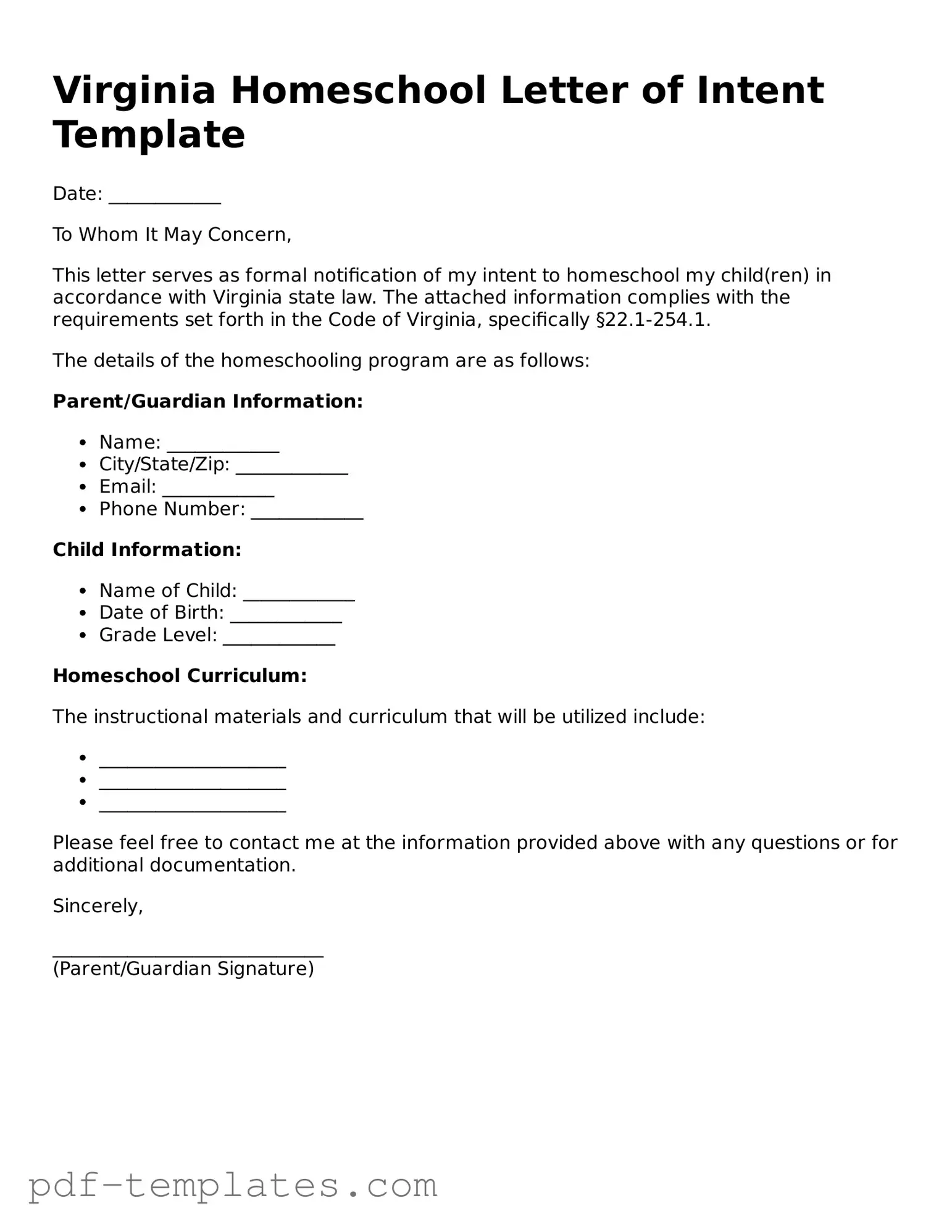The Virginia Homeschool Letter of Intent form shares similarities with the Notice of Intent to Homeschool form used in other states. Much like Virginia's form, this document serves as a formal declaration to the local school district that a family intends to educate their children at home. Both forms typically require basic information about the student and the parent or guardian, ensuring that the school district is aware of the educational choice being made. The process is designed to keep the lines of communication open between homeschooling families and local education authorities, fostering a collaborative environment for educational oversight.
The California Agreement Room form is an essential tool for establishing clear expectations in the rental process of private homes, ensuring all parties understand their obligations. This document not only delineates the terms of the agreement, such as rent amounts and maintenance responsibilities but also provides vital information about tenant rights. For further details regarding forms related to room rentals, you can visit https://formcalifornia.com/.
Another document that resembles the Virginia Homeschool Letter of Intent is the Curriculum Plan, which is often submitted alongside the intent in various states. This plan outlines the educational materials and methods that a family intends to use throughout the academic year. Like the Letter of Intent, the Curriculum Plan provides transparency about the educational approach, allowing school officials to understand how the child’s learning will be structured. This document helps ensure that the homeschooling experience meets educational standards and provides a roadmap for the family's educational journey.
The Individualized Education Plan (IEP) is another document that shares a conceptual link with the Homeschool Letter of Intent. While the IEP is specifically tailored for students with special needs, it serves a similar purpose in terms of outlining educational goals and the methods to achieve them. Both documents emphasize the importance of a personalized approach to education, allowing parents and guardians to advocate for their child’s unique learning requirements. In this way, the IEP and the Letter of Intent both reflect a commitment to ensuring that each child's educational experience is thoughtfully considered and planned.
Lastly, the Student Enrollment Form used by traditional public schools bears some resemblance to the Virginia Homeschool Letter of Intent. Both documents require essential information about the student, including their name, age, and grade level. The Enrollment Form serves as a means for schools to gather data on their student population, while the Homeschool Letter of Intent informs the school district about a family's choice to educate their children at home. This shared focus on student information highlights the importance of record-keeping in both public and homeschooling environments, ensuring that educational authorities can effectively monitor and support student learning.
